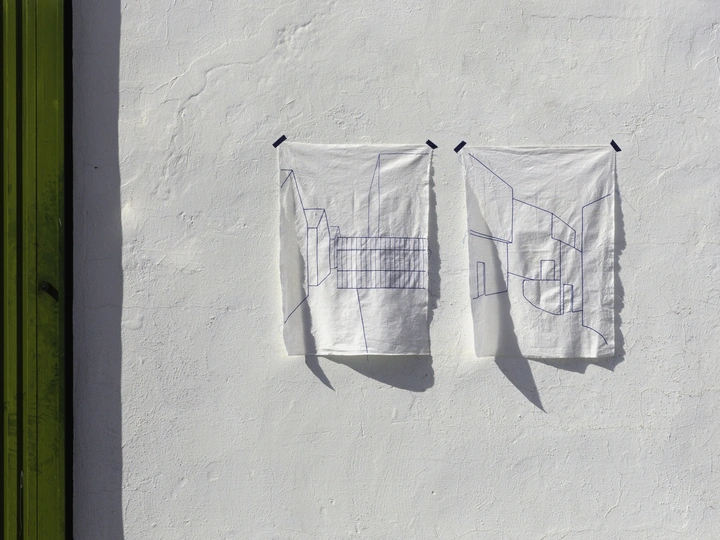Where the city ends

Lola Goyanes is an architect and textile artist. She works independently on the relationship between productive heritage and landscape from a gender perspective. Since 2020 she has been dedicated to the dissemination of textile tradition through embroidery workshops that bring this artistic practice to new audiences. She currently combines both areas of research, seeking an approach to the territory from a tactile representation that brings together tangible and intangible memory.
As a textile artist, she has worked in collaboration with the Spanish Network for Rural Development on the Rural Youth Art Summit 2023 crafts programme for young people. In 2024, she held her first solo exhibition Los mismos lugares, at the University of Seville, a project that brings together embroidery and engraving around productive constructions as an apparent bucolic landscape.
She studied Architecture at the University of Zaragoza with a specialisation in Urban and Landscape Design. She developed the research project Villafeliche: paisaje y memoria that studies industry and agriculture’s marks on the territory of a historic Moorish town in Aragon. She graduated from the Master's Degree in Architecture at the Escuela Superior del Vallès (Barcelona). She currently combines her professional practice with studying Fine Arts at the University of Seville.
The city is a place of constant change, torn between eternal expansion and death. In the last hundred years, its evolution has accelerated radically. The dynamics of production and consumption have been completely altered by total globalisation, distancing the countryside from the city as never before. The consequences of these changes are more than we can name: depopulation of the territory, gentrification of historic centres... a complete break with a linear evolution of our way of living in relation to the land.
In the midst of all these changes there remains a limbo space where the city disappears and the countryside begins. These in-between spaces belong to contemporary classifications such as non-place (Marc Augé) or third landscape (Gilles Clément). They are invisible frontiers between two places with contradictory logics, destined to meet. These spaces are characterised by their non-design, by their difficult interpretation, by their mismatch of speeds and forms.
Studying the city from its limits offers the possibility of finding the meeting place. Observing and cataloguing its constructions allows us to establish our real knowledge of the territory, forcing us to interact with an industrial landscape that is alien to most of the population. Where and by whom is our food grown? How is it stored, processed, distributed? Do we know how to recognise its archetypes?
Drawing and mapping these architectures allows us to get to know the city from a different point of view, referring to a recent history that still lives in it. The use of traditional drawing media (such as drawing and embroidery), together with the digital archive, gives a physical character to the proposal. Getting closer to the rural field implies moving away from the statistical knowledge of national databases, to concretely study the bordering spaces of our cities.